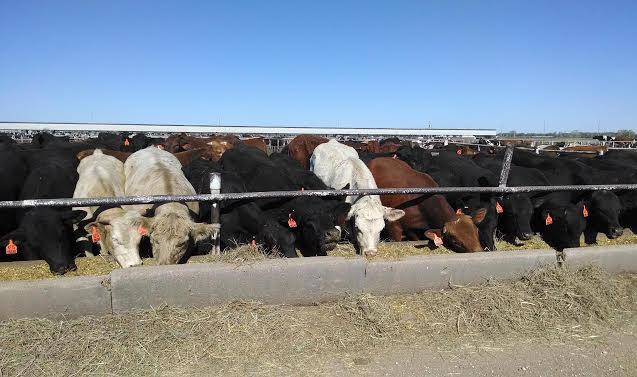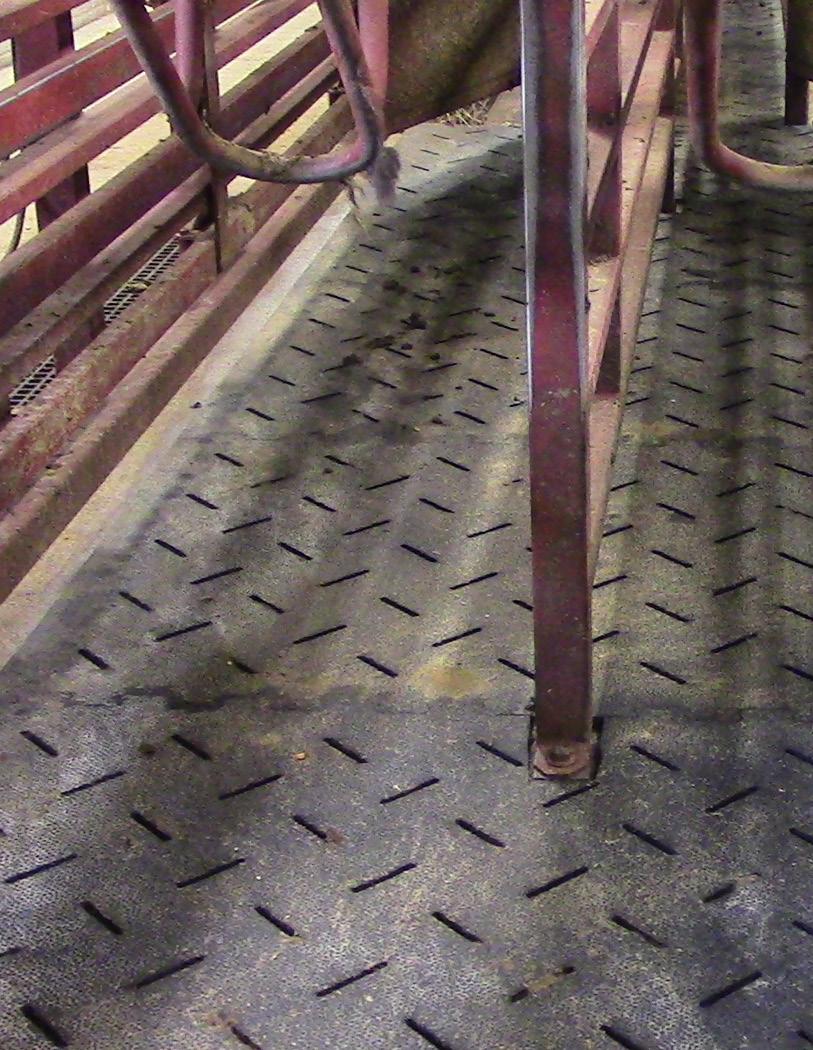
5 minute read
Secure Food Supply Planning Takes Root in Kansas
By: Sandy Johnson, Emergency Management Coordinator, Kansas Department of Agriculture
Emergency planners have been preparing for an outbreak of foot-and-mouth disease (FMD) for decades. In 2001 when the United Kingdom experienced their catastrophic outbreak, Kansas policy makers were quick to develop contingency plans specific to FMD. Animals were lost, tourism was hugely affected and behavioral health consequences were real. That same year terrorists attacked the U.S. and a terrorist nexus was added to our planning process — what if someone did this on purpose? The Secretary of the U.S. Department of Health and Human Services publicly announced his surprise that no one had thought to attack our food supply, which had few protections in place. Homeland Security Presidential Directive No. 9 added the food and agriculture sector to the nation’s critical infrastructure and the table was set.
Sixteen years later…what have we accomplished?
In Kansas, more than 100 FMD exercises and trainings have been conducted, and policy makers have attended many national meetings. After the second outbreak in the U.K. in 2007, it quickly became evident that stopping the movement of susceptible species (cattle, swine, sheep and goats) was absolutely critical in stopping the spread of footand-mouth disease.
Foot-and-mouth disease is the most infectious known animal disease. The World Organisation for Animal Health (OIE) has strict reporting requirements, and many coun- tries are currently vaccinating for FMD where it is endemic. The U.S. has an FMD free without vaccination status which is the most coveted. This status opens overseas markets that are not available when vaccination occurs or disease is present. Keeping the U.S. free of FMD is a key priority for the U.S. Department of Agriculture and for state animal health officials. Eradicating the disease if an outbreak were to occur has been a key mission of Kansas animal health authorities since the last outbreak in the U.S. in 1929.
Since animals can carry the disease for several days before showing symptoms, and due to the nature of animal movement and Kansas being an import state, stopping movement of animals became a key strategy. This critical response strategy must be implemented immediately to obtain the maximum benefit.
Obviously, this strategy is not easy to accomplish. Kansas planners from a variety of organizations have spent years working with law enforcement, transportation officials, industry representatives and elected officials to develop plans and procedures to make the strategy actionable.
At the same time, it was clear that a prolonged stoppage of animal movement would devastate the industry. Milk needs to move immediately to avoid shortages and environmental damage. Pigs outgrow pens. Cattle need to move to slaughter. How do we allow movement without spreading the disease?
Secure Food Supply Plans started with the Secure Egg Supply and have evolved to include all poultry (due to an avian influenza outbreak), milk, pork and beef (specific to FMD). Spearheaded by the Center for Food Security and Public Health at Iowa State University, with the assistance of USDA and checkoff organizations, the programs are now reaching maturity. These plans are designed to allow movement of animals and commodities out of a regulatory control zone to the next node in the supply chain. During the HPAI outbreak of 2015, thousands of commodities were permitted to leave control zones and go on to further processing across the U.S. To obtain a permit, the premises of origin had to meet the biosecurity standards set forth in the secure food plans (in this case, turkey or egg supply).
Kansas planners have been part of the Secure Beef Supply (SBS) team since its inception. Kansans are on every work group assigned to make SBS planning a successful endeavor for all stakeholders in the beef supply chain.
In 2015, the Kansas Department of Agriculture recognized that feedyards needed some assistance with biosecurity planning. The SBS tools were under development, but not yet ready. With the assistance of Dr. Larry Hollis, a retired beef extension specialist from Kansas State University, we worked with the Texas Panhandle Regional Planning Commission to use the biosecurity guidelines they developed as part of the Department of Homeland Security Regional Resiliency Assessment Program. The guide is very comprehensive and contains 16 chapters of recommendations accompanied by planning templates to assist the feedyard manager with implementation.
Several companies told KDA that although they appreciated the work we were doing, they were concerned about overlap with the SBS planning efforts. They also expressed frustration with the volume of materials and the length of some of the tools. In the spring of 2017 we reviewed the Biosecurity Guide for Feedyards and began updating it to match the guidance and terminology in the SBS plan. We hired three student interns from K-State to work with feedyards and dairies to write biosecurity plans that would meet the standards set forth in the Secure Milk and Beef Supply plans. We quickly had more work than time and staff would allow, but the process has shown us the importance of this type of planning to the industry and to KDA.
The interns started by meeting with dairy and feedyard managers to gain an understanding of how their operations worked. Using satellite photos, the interns devised a proposed Line of Separation (LOS) depicting what parts of the operation would remain in the clean area (inside the line) and what would be outside, or the dirty area. Secure food supply planning relies on the assumption that public roads are dirty. The goal of this planning for the operation is to keep everything on the premises clean — not allowing dirty vehicles, animals or people onto the premises without some level of cleaning and disinfection. Another major goal of this planning is to greatly reduce the need for full-scale cleaning and disinfection stations which are labor and resource intensive and can be impractical in Kansas winter weather.
This project resulted in completed biosecurity plans for a dozen feedyards, six dairies and a milk processor. The goal is to continue the project with KDA staff and part-time intern labor for the time being. A concept we are considering involves training industry intern labor to allow those interns hired by the operation to draft the plans for the feedyard or dairy management. The challenge in the past was not allowing time for the interns assigned with biosecurity planning to learn the process and get the plans drafted. We have found that this takes several weeks, so an intern can’t be expected to perform these activities in a few days or a few hours added on to already full days.
Once the plans are completed, KDA facilitates an informal tabletop exercise where the plans are presented to feedyard management, followed by a disease outbreak walkthrough where various roles and responsibilities of state, local and feedyard personnel are discussed. County emergency managers and the USDA personnel assigned to the area also attend.
Once the company has had a chance to finalize the plans and make any changes necessary to feedyard operations, an auditor will go through the audit checklist on site with a manager. The goal of the audit is to ensure that the feedyard could quickly transition from day-to-day operations to an enhanced biosecurity stance in a rapid fashion. The feedyard will have to demonstrate this ability in order to receive a permit from KDA to move animals during an outbreak of FMD. In Kansas, this will apply not only when a premises is inside a control area, but also for the period of time a stop movement order is in effect, which could be several weeks or even months depending on the scope and severity of the outbreak.
During an outbreak, KDA will only issue permits for animal movement for premises that have demonstrated the enhanced biosecurity protocols for a predetermined period. The Kansas Animal Health Commissioner will also use the same standards for out-of-state permits for animals coming to a destination in Kansas.
If you are interested in more information about animal disease procedures in Kansas, the KDA website will be updated in September with links, checklists and information on how to get assistance: www.agriculture.ks.gov/EmergencyManagement. You can also contact Sandy Johnson (sandy. johnson@ks.gov).











